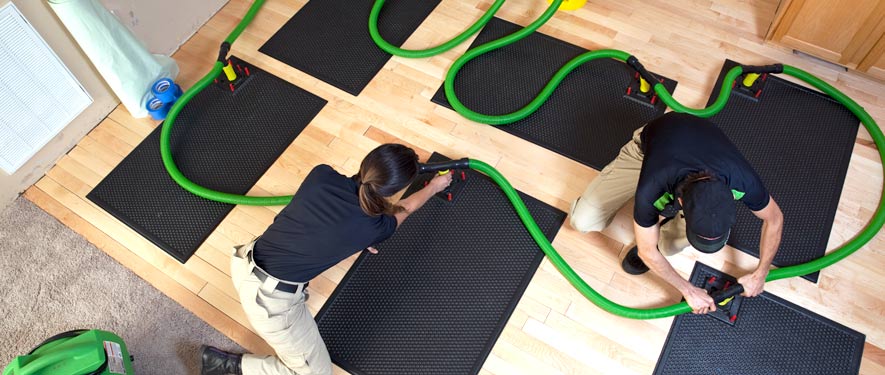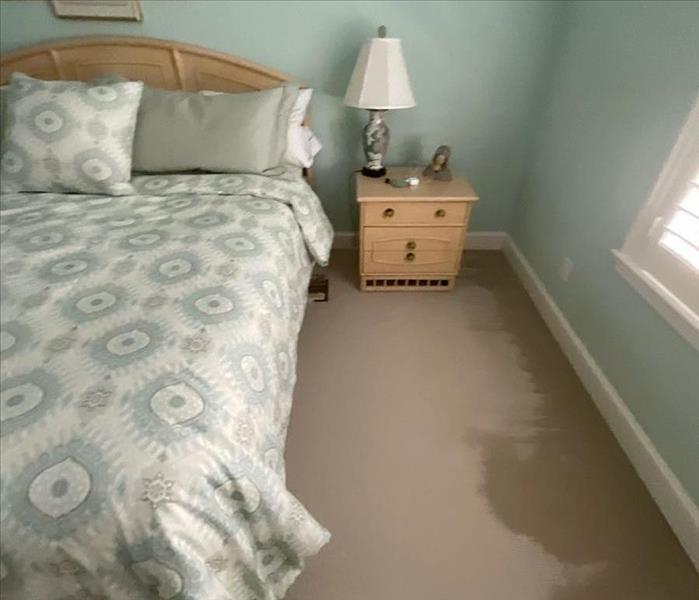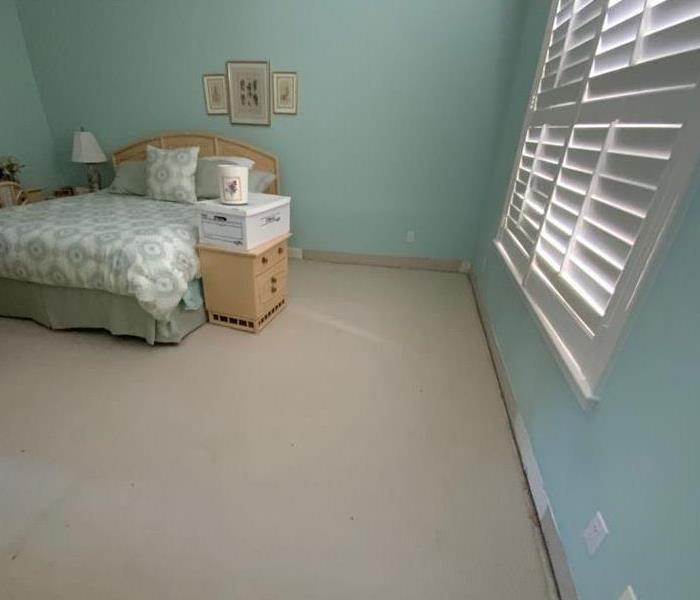
Step 4: Drying and Dehumidification
Our Water Damage Restoration Process
After the excess water is removed, it might seem like everything is back to normal, but there might be hidden dangers lurking behind the dry exterior. If you look past the dry appearance, you’ll notice that most materials will still be wet after the initial extraction. Almost all materials in your home or business, like wood, drywall, and most flooring materials, are porous and absorb water. These materials can give the outward appearance of being dry when they’re internally soaked. If the drying process is not continued past extraction, these materials will begin to break down, or worse, grow mold.
Drying / Dehumidification
Our Professionals will use room measurements, temperature, and relative humidity to determine the optimal number of air movers and dehumidifiers to dry your home or business. We’ll carefully monitor the progress using moisture meters until the materials return to acceptable drying goals.
- Use Dehumidification Equipment
- Use Monitoring Equipment to Track Progress
Monitor Floor and Walls
We check the moisture levels to monitor the drying process.
- Monitor Floors
- Monitor Walls
Drying Equipment
- Industrial-grade dehumidifiers help prevent secondary water damage like swelling and warping of floors, walls, and furniture.
- High-speed air movers create airflow across walls, carpets, pads, and furniture, which accelerates the evaporation of moisture.






 24/7 Emergency Service
24/7 Emergency Service




